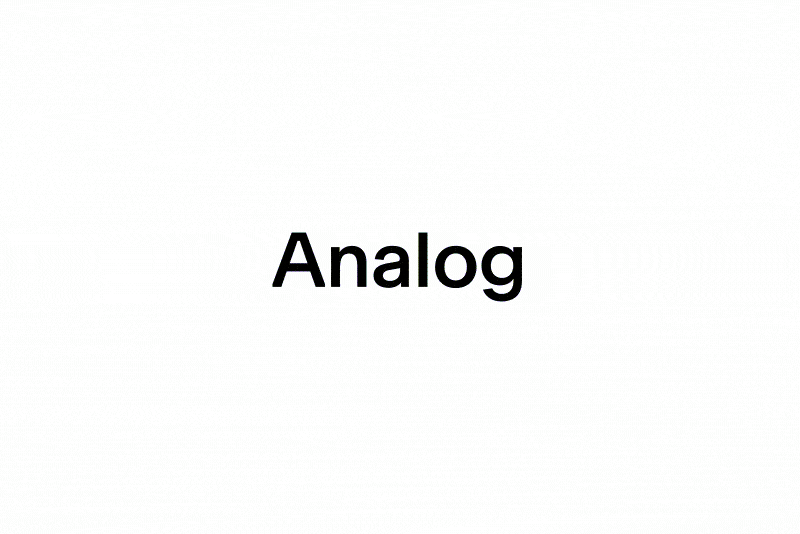2024 Web Design Trends
As 2023 comes to a close, the digital landscape is teeming with exciting possibilities in professional web design. The industry is poised to embrace a fresh wave of design trends that promise to redefine the online user experience.
This year’s trends blend art and functionality, and they explore creative avenues that are both technologically driven and emotionally resonant. Ahead are five trends that offer a captivating fusion of tradition and innovation in 2024:
Artificial Intelligence (AI)
Artificial intelligence (AI) has made an indelible mark on web design, influencing the industry as both an aesthetic and functional tool. AI has empowered designers to create visually striking websites that engage visitors, tailoring color schemes, typography, and layouts to optimize the user experience. This level of personalization has elevated the role of aesthetics in web design, ensuring every visitor encounters a unique and visually appealing interface.
AI is a game-changer in automating repetitive tasks and taking the guesswork out of content creation. For instance, Squarespace AI empowers you and your clients to develop a first draft of copy for their websites with just a few instructions and a click of a button. AI can also help you brainstorm concepts, develop outlines for sitemaps, and create generative art for client sites. As technology evolves, the role of AI undoubtedly continues to expand, offering professional web designers unprecedented opportunities to create more compelling online experiences while streamlining workflows.
Subtle Nostalgia
Grounded in human connection and a sense of familiarity, Subtle Nostalgia delivers a vintage aesthetic that’s achieved through Serif fonts, muted color palettes, and retro visuals and imagery. The trend hearkens back to the past, embracing elements and authenticity in reliable branding from previous eras like the 70s and 80s. It creates a warm, comforting ambiance that resonates with visitors–nostalgia has proven to be a powerful tool for engaging and connecting with an audience.
Implementing Subtle Nostalgia in client websites requires a delicate balance between the old and the new. In addition to the aforementioned font and color selection, you can add retro icons and motifs. Even the content of your clients’ websites can embrace the Subtle Nostalgia trend. You can help your client craft content that evokes nostalgia, telling their brand story with nostalgic elements and messaging that creates a deep connection with visitors. Subtle Nostalgia is both charming and functional in the present digital era where usability reigns supreme.
Hyper-Reality
Pushing boundaries of what’s possible, Hyper-Reality immerses visitors in surreal, futuristic experiences. The aesthetic has had a profound influence on contemporary web design, leveraging advanced technologies such as augmented reality and virtual reality to create visually striking, interactive, and otherworldly digital environments. Hyper-Reality web design prioritizes the use of vibrant colors, surreal visuals, and dynamic animations to transport visitors into what feels like an entirely new digital realm.
To incorporate Hyper-Reality into your clients’ websites, focus on futuristic user interfaces, embracing unconventional and captivating elements. This includes 3D graphics, interactive animations, and transitions that feel straight out of a science fiction film. Additionally, stretched and exaggerated types and puffy and bubbly elements create an attention-grabbing environment that’s grounded in retro-futurism. The use of gamification and gamified interactions can also be used to enhance visitor engagement and create memorable experiences.
Analog
The Analog aesthetic in web design represents a journey back in time, evoking a similar warmth and authenticity to Subtle Nostalgia but with the influence of more DIY movements like zine design 90s. The aesthetic has gained momentum in the digital landscape, offering a refreshing departure from the cold, minimalistic designs that have dominated in recent years. It introduces elements such as retro typography, vintage color palettes, and tactile, lo-fi finishes, creating a sentimentality that resonates with visitors.
You can implement the Analog aesthetic by carefully selecting design elements that transport visitors to another era. This may include the use of retro fonts, faded color schemes, and vintage-inspired imagery. Handcrafted visuals, like custom illustrations or photorealistic drawings, can add a personal touch. Additionally, you can incorporate textured elements that mimic the feel of physical materials, creating a tangible and sensor visitor experience.
Minimalism Revival
Timeless in nature, Minimalism Revival is the resurgence of the “less is more” design principle. The aesthetic is marked by simplicity, clean lines, and a focus on the essential. This trend reflects a desire for uncluttered digital spaces and efficient user experiences. It prioritizes white space, legible and clear typography, and reduced visual noise, creating a sense of calm and clarity.
In the modern era, Minimalism Revival can be achieved through minimalistic chaos, where elements of minimalism meet intentional disorder and predictability through asymmetrical elements, vibrant color schemes, and diverse design elements. Embrace the simplicity in design by using a small selection of bright colors, limited typography variations, and minimalistic navigation. Content is king in this approach, with well-organized information and concise messaging. A focus on high-quality imagery and minimal, purposeful animations can enhance the visual appeal while maintaining the minimalistic essence.
As we step into 2024, remember that the future of web design is full of exciting possibilities. With these five web design trends to boot, let the boundless fusion of technology, nostalgia, and artistry inspire and push you creatively throughout the year. For more information on applying these aesthetic principles to your design projects, take a look at our deep dives:
Want more?
Check out Squarespace Circle, Squarespace’s program for professional designers. Along with exclusive content, discounts, and other perks, Circle brings professionals together from all across the globe to exchange advice while connecting with new clients and collaborators.






